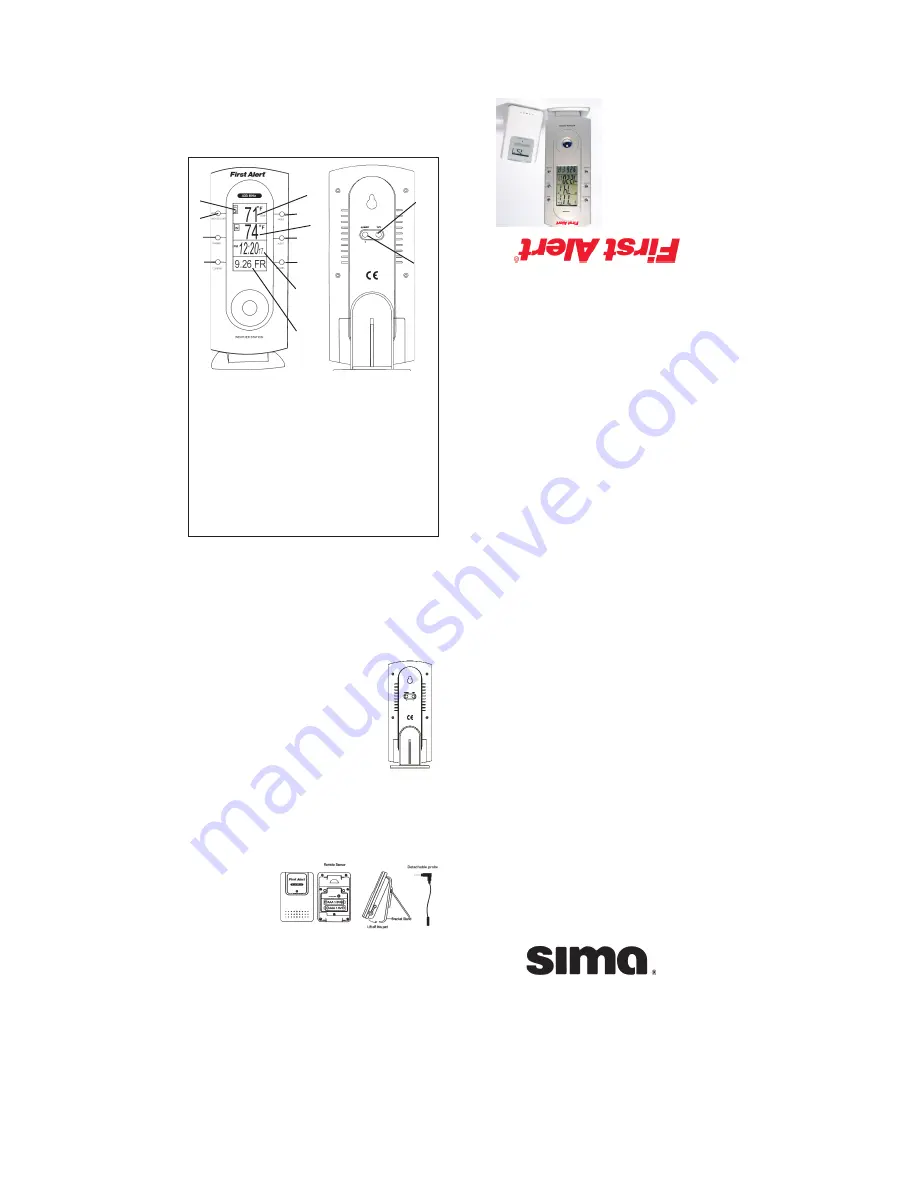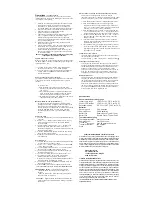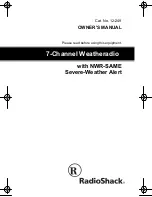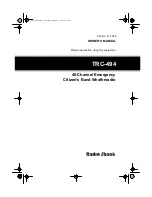
Set-up
Congratulations on your purchase of the new First Alert
Brand RF Wireless Weather Station Model FWS-103.
Using the latest wireless technology and digital electronics,
this device displays the indoor and outside temperature at
up to 3 remote locations. It also includes a digital clock
with backlight and a programmable audible alarm.
Both the Weather Station (receiving unit) and the Remote
sensor (sending unit) require batteries. Insert the
batteries in the Weather Station before doing so for the
remote units.
Battery Installation for your Weather Station
To install batteries in the Weather Station:
1.
Remove the stand (if it is in place).
Press and slide the battery cover to
open it.
2.
Insert 2 AA size batteries, matching the
(+) and (-) polarity marks on the battery
compartment. Close the battery cover
and re-install the stand.
3.
A dash icon (—) will flash on the upper
part of the LCD. This indicates that the
unit is waiting and ready to receive a
signal from the remote sensor(s).
Battery Installation for your Wireless Remote Sensor
To install batteries in the Remote Sensor:
1.
Lift off the bracket stand by releasing the two bottom
fixing snaps.
2.
Use a small Phillips screwdriver to remove the screw
on the battery cover.
3.
Insert 2 AAA
size batteries,
matching the
polarity marks
on the battery
compartment.
4.
Once the batteries are inserted, the sensor will
automatically transmit a temperature reading at 30-
second intervals to the receiving unit. You can
manually send a signal by pressing and holding the
“TX” button for 2 seconds. Use the tip of a ballpoint
pen, a paper clip or other small pointed implement to
press the TX button.
5.
The receiving unit will display a reading for remote
channel 1 and the temperature reading. Before closing
the battery compartment proceed with testing the units
for communication. Instructions for testing are located
in the Operations section of this manual, on the other
side of this paper. Follow the same procedure to install
batteries in other remote sensors.
Precautions
1. Do not clean the units with abrasive or corrosive compounds. It
may scratch the plastic parts and corrode the electronic circuits.
2. Do not subject the units to excessive force shock, dust,
temperature or humidity, which may result in malfunction,
shorter electronic life span, damaged batteries and distorted
parts.
3. Do not tamper with the units’ internal components. Doing so will
invalidate the warranty on the unit and may cause unnecessary
damage battery and distorted parts.
4. Do not subject the units to excessive exposure to direct sunlight.
5. Never immerse in water or expose to heavy rain. The remote
sensor is of a splash-proof design.
6. Always read the user’s manual thoroughly before operating the
unit.
Wireless RF
Weather
Station
with remote sensor
User Manual for
Model FWS-103
Troubleshooting
If the display for a particular channel shows a dash (—), check: the
following items:
• The remote unit of that channel is still in place and connected.
• The batteries of both units are fresh. Replace as necessary.
• The transmission is within range and path is clear of obstacles and
interference. Shorten the distance when necessary.
• Avoid signals from other household devices, such as home security
systems and entry controls, that may interfere with this product and
cause temporary reception failure. This is normal and it doesn’t
affect the general performance of the product. Temperature
transmission and reception of readings will resume once
interference recedes.
To ensure proper operation, please read this instruction manual
carefully and keep for future reference.
1. Clear/
Set button
2. Channel button
3. Snooze/Light button
4. Remote Sensor indicator
5. Remote temp.
6. Mode
7. Indoor temp.
8. Alert
9. Max/Min temp alarm
10. Time of day clock
11. Day/Date clock
12. F
o
/C
o
and
“-” button
13. On/off
and
“+” button
5
7
4
3
2
1
6
8
9
10
11
12
13
140 Pennsylvania Ave.
Bldg. #5
Oakmont, PA 15139 USA
Phone: 800-345-7462
www.simacorp.com
First Alert
®
is a registered trademark of the First Alert Trust
used under license
© 2003 Sima Products Corporation All rights reserved
FCC WARNING!
This equipment generates and uses radio frequency energy and if not
installed and used properly, that is, within strict accordance with the
manufacturer’s instructions, may cause interference to radio and television
reception. It has been tested and found to comply with the limits of a
Class B digital device in accordance with Part 15 of FCC rules, which are
designed to provide reasonable protection against such interference in a
residential installation. However, there is no guarantee that interference
will not occur in a particular installation. If this equipment does cause
interference to radio or television reception, which can be determined by
turning the equipment off and on, the user is encouraged to try to correct
the interference by one or more of the following measures:
1. Reorient the TV/ radio antenna.
2. Relocate the receiver away from the TV/radio receiver.
If necessary, the user should consult the dealer or an experienced radio/
television technician for additional suggestions.
The user may find the following booklet prepared by the Federal
Communications Commission helpful: “How to Identify and Resolve TV
Interference Problems”. This booklet is available from the U.S.
Government Printing Office, Washington, D.C. 204502, Stock No. 004-
000-00345-4
FCC Notice
The user is cautioned that changes or modifications not expressly
approved by the manufacturer could void the user’s authority to
operate the equipment. Linear radio controls provide a reliable
communications link and fill an important need in portable wireless
signaling. However, there are some limitations which must be
observed.
For U. S. installations only: The radios are required to comply with
FCC Rules and Regulations as Part 15 devices. As such they have a
limited transmitter power and therefore limited range. A receiver cannot
respond to more than one transmitted signal at a time and may be
blocked by radio signals that occur on or near their operating
frequencies. Changes or modifications to the device may void FCC
compliance. Infrequently used radio links should be tested regularly to
protect against undetected interference or fault.




















